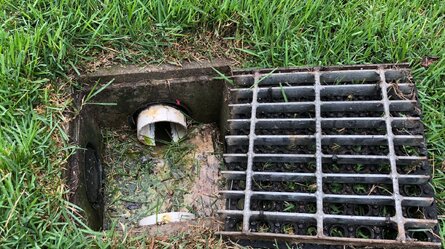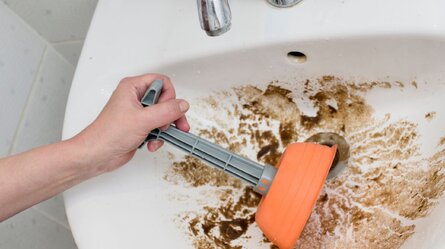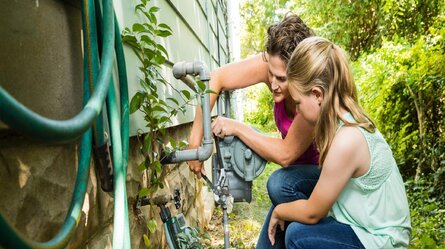Tree roots are one of the leading causes of sewer line blockages and emergency drain service calls. As tree roots grow, they seek out sources of water and nutrients. Sewer lines provide an ideal environment for roots with their continuous supply of water and nutrients from waste.
Over time, small roots can grow into large masses that fully block pipes. This leads to backed-up drains, flooded basements, and raw sewage overflowing into homes.
In this blog post, we’ll discuss the types of trees most likely to cause sewer backups, where tree roots can penetrate pipes, the costs associated with cleaning blocked drains, and methods of preventing root intrusion. Understanding the impact of tree roots can help homeowners avoid emergency drain situations and costly repairs.
How Do Tree Roots Block Drains?
Tree roots seek out moisture naturally, making the sewer line running beneath our gardens and streets prime targets. Here’s how the process unfolds:

Roots Seeking Moisture
Tree roots naturally gravitate towards even the slightest hint of moisture in the soil. This tendency often draws them directly to your plumbing pipes, creating potential issues over time.
Entering the Pipe System
Small cracks or loose joints in sewer pipes can easily allow fine tree roots to sneak in. Over time, these roots can grow and spread within the plumbing, leading to slow drains or even complete blockages.
Expanding Root Systems
As roots mature, they thicken and multiply, exacerbating the blockage. What started as a few small roots can grow into a dense mass, trapping toilet paper, grease, and other debris.
Damaged Pipes
As the roots expand, they can exert immense pressure on the pipes, causing a broken pipe or even completely collapsed sections, leading to severe blockages and costly repairs.
Slow Drains and Backups
Initially, you might notice slower drainage in your sinks or gurgling noises from your toilet. These are early warning signs that roots may be impacting your drain system.
The Extent of Tree Root Damage
Tree root intrusion can lead to a range of issues, from blocked drains to broken pipes. Surrounding soil can also be disturbed, causing further settlement and damage to the existing pipes. The root system of a mature tree can be extensive, and if not managed properly, it can lead to repeated blockages and even the need for complete pipe replacements.
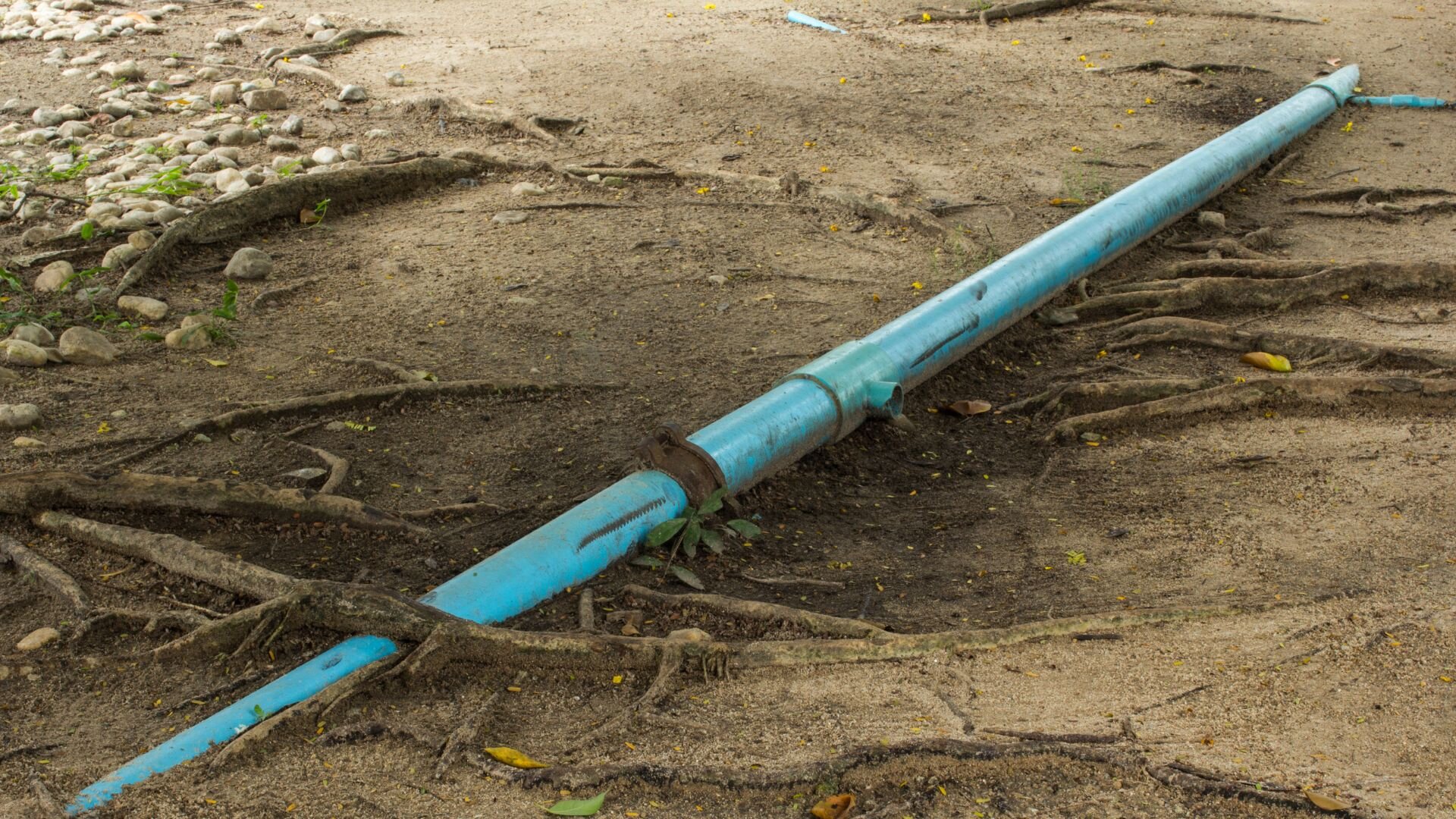
Preventing Tree Root Intrusions
Preventing tree roots from damaging your sewer lines and drain pipes involves strategic planting and regular maintenance. Here are some preventative measures:
- Planting Trees: When you want to plant trees, choose species with non-aggressive root systems and plant them away from existing pipes and sewer lines. Clay pipes are the most susceptible to tree root issues; they are older and installed in smaller sections.
- Regular Inspections: Use a CCTV drain camera to inspect your underground pipes regularly. This can help identify potential root intrusions before they become a bigger issue.
- Barrier Installations: Installing physical barriers can redirect tree roots deeper into the ground, away from your pipes.
Remove Tree Roots from the Pipes
When it comes to removing tree roots from your plumbing system, there are several methods:
Mechanical Removal
Professional plumbers may use a drain snake or hydrojetting to clear tree roots and debris from the pipes.
Chemical Treatments
Rock salt or commercial root-killing formulas can discourage root growth after mechanical removal, but they must be used cautiously to prevent environmental damage. Rock salt can kill roots by drying them out. The method involves pouring around 1kg of rock salt into your toilet and flushing. Repeat this 3 or 4 times and leave the toilet alone for 8-12 hours. Rock salt is quite poisonous to plants and tree roots.
Pipe Relining
For a more permanent solution, pipe relining can repair the damaged area without requiring extensive excavation. This process involves inserting an epoxy resin-filled liner into the existing pipes, effectively sealing off any entry points for roots.
Tree Roots and Stormwater Drains
Stormwater drainage systems are intentionally buried more shallowly than sewer lines, often providing opportunities for opportunistic tree roots to enter through cracks and joints, seeking nutrients. Once inside pipes, tree roots will continue proliferating to follow available water sources. As the roots expand, they can wreak havoc on storm drainage infrastructure in several ways.
Roots cause the most immediate issue: full-on drain blockages, as thick mats of roots totally clog pipes. This plugging effect leads to immediate localised flooding during rain events when stormwater backs up. However, even smaller roots that just line pipe interiors can impede full cross-sectional flow, reducing overall drain capacity and causing overflow flooding.
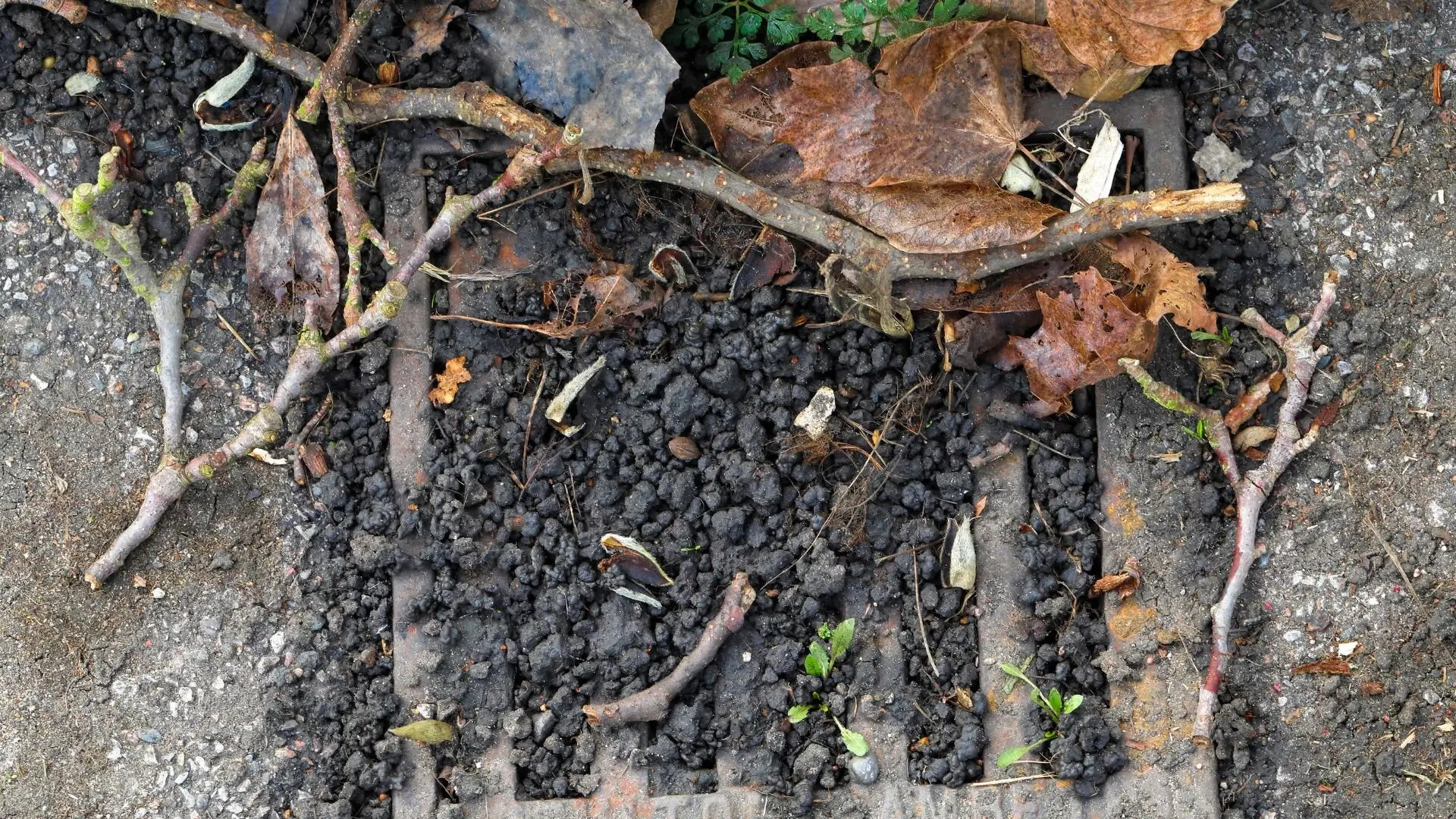
In addition to flow issues, expanding roots inside drains can exert damaging radial pressure on piping. Cracks, fractures in pipe materials, and separated joints stemming from this stress result in leaks and water escaping underground. Large anchor roots penetrate joints and may even dislodge and misalign entire pipe sections through this force.
Between blocking flow, reducing pipe capacity, creating leaks, and physically disrupting drain alignment, tree roots pose multiple problems for critical stormwater infrastructure. Their intrusion and continued expansion spell trouble for keeping residential storm drainage effective. Getting ahead of root issues before they occur is key to preventing flooding properties.
Preventing root intrusion involves careful drain pipe layout and the use of exclusion techniques:
- Locate drains as far as possible from existing trees. If possible, maintain a distance of at least 10 feet between trees and drains.
- Use pipe materials like PVC or cast iron that have smooth interior walls that leave no gaps for roots to enter.
- Wrap drains with geotextile fabric to create a root barrier.
- Use rubber-gasketed joints instead of rigid joints that can separate over time.
- Consider root pruning or removal for trees near drains.
Regular inspections of stormwater drains, especially the joints, can help detect root intrusions early before they cause major damage. Catching problems early also makes removal and repairs simpler.
It’s important to use chemical root control products carefully around storm drains to prevent harming waterways. Consulting with a certified arborist is a good idea for properties with large storm systems near valuable trees. With the right precautions, trees and storm drains can peacefully coexist.
When Tree Roots Cause Persistent Drain Problems, Call the Pros
If you’re experiencing common signs of tree root intrusion, like slow drains, frequently blocked drains, or gurgling noises from your pipes, it’s time to call a professional plumber. Skilled plumbers can assess the extent of the root invasion into your plumbing system and drainage pipes. They have the equipment and expertise to diagnose problems that roots often cause, like blocked drains, broken pipes, pipe backups, and damaged underground sewer lines.
Plumbers use high-tech CCTV drain cameras to see inside pipes and view tree root blockages or cracked sections caused by root overgrowth. Depending on the location and severity of the root issues, they can clear away roots in pipes through hydro jetting, mechanical snaking, or root-cutting blades.
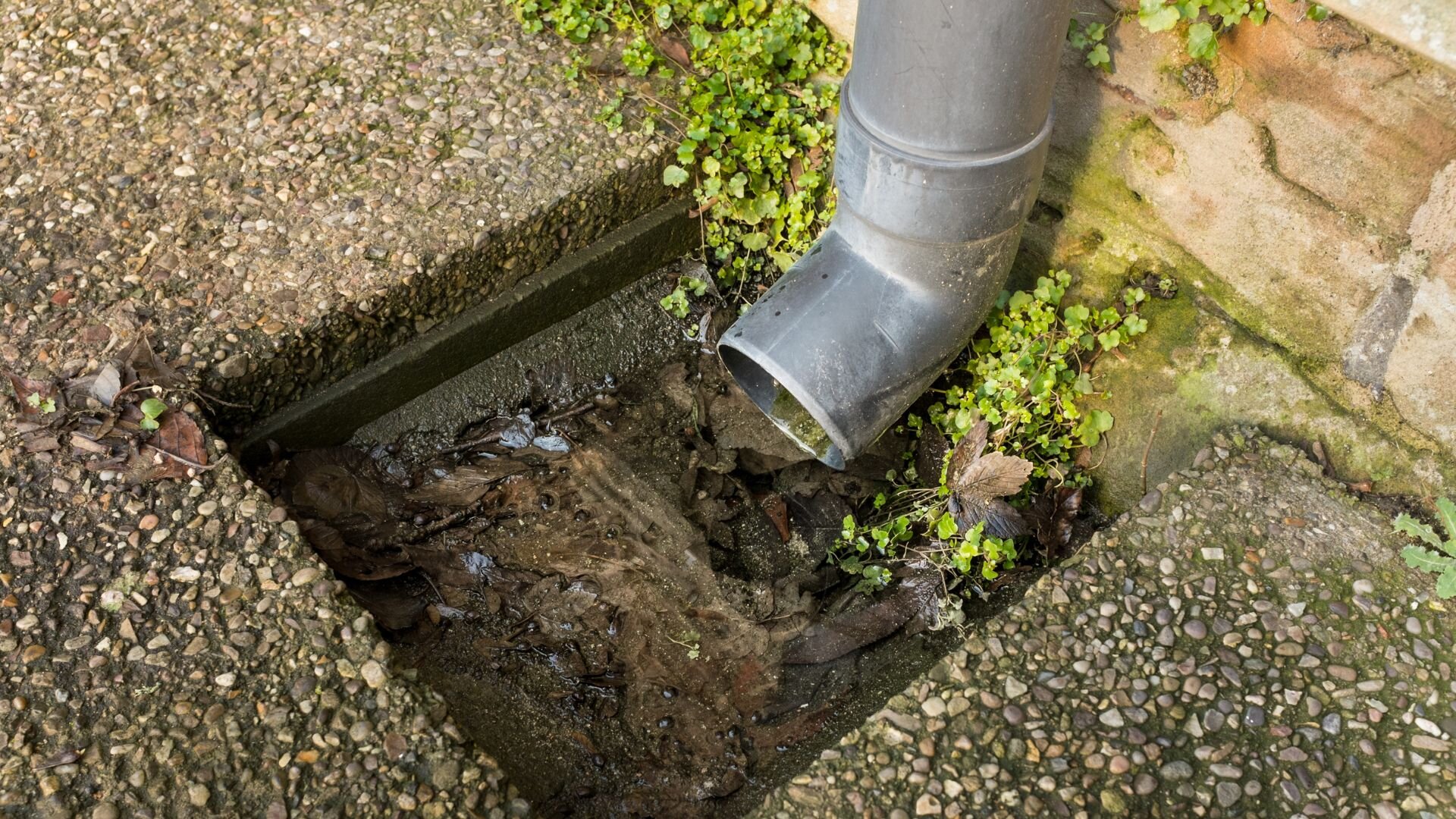
For collapsed, broken, or severely blocked pipes caused by intrusive tree roots, plumbers may need to replace damaged sections or reline existing pipes. They can also provide guidance on removing problematic trees or best practices for planting new trees to avoid future root damage.
Repairing issues like blocked drains, broken pipes, or clogged sewer lines before roots cause major blockages can prevent extensive emergency plumbing repairs down the road. Severe root intrusions that lead to sewage backups, overflowing toilets, or completely collapsed pipes cause unhealthy hazards and extremely costly property damages.
Don’t wait until you’re dealing with overwhelmed plumbing fixtures, flooded basements or wet soil indicating pipe failures. At the first signs of root problems like slow drains or gurgling sounds, rely on professional plumbers to thoroughly clear roots and make any needed drainage system repairs for a permanent solution.
Partner with Us for a Root-Free Future
Tree roots in pipes may operate silently, but the disruption they cause to your plumbing system can be significant. This can lead to a blocked drain, damaged sewer lines, and unexpected expenses. By understanding the dynamics between tree roots and your plumbing system, you can take proactive steps to prevent and tackle these issues.
For expert guidance and solutions in managing tree root intrusions and maintaining a resilient plumbing system, lean on Woolf Plumbing & Gas. We’re more than just service providers; we’re your partners in ensuring a smooth, root-free future for your home’s drainage system. So, contact us today!
Frequently Asked Questions About Tree Roots and Drain Blockages
What are the most common signs of tree root damage in my plumbing?
If you notice water draining slowly from your sinks, tubs, or toilets, it might be a sign that roots have taken over your drain lines. Gurgling noises as water struggles through clogged pipes, sewer gas smells, and repeated blockages are all red flags. Over time, tree roots can cause significant damage.
Which trees are most likely to clog my sewer line?
Willow, poplar, elm, pine, cedar, and maple tree roots often aggressively penetrate sewer pipes because they contain the moisture and nutrients roots seek out. Even smaller ornamental trees like bushes and shrubs near your home can cause root intrusions through tiny cracks in your plumbing.
How do roots get into sewer pipes?
Thin, hairy tree roots can infiltrate through tiny cracks, faulty joints, or loose connections in underground pipes. Over time, these roots can grow, joining forces to form large masses that completely block drains.
Can roots get into underground plumbing pipes?
Tree roots are opportunistic and invade all types of underground piping if a small crack or opening allows access. In addition to sewer lines, they can enter and block septic tanks, storm drains, water supply lines, and more.
Why are tree roots a problem?
As roots grow and take over inside pipes, they can cause major blockages, breakages, sewage backups into homes, flooded basements, and foundation damage over time. Roots left inside pipes are difficult to remove and tend to regrow, requiring ongoing drain cleaning rapidly.
How can I get rid of tree roots in my plumbing pipes?
For extensive root intrusions, you will likely need a professional plumber to snake your pipes thoroughly, use pressurised hydro jetting, or mechanically cut through roots, then repair any severely damaged pipe sections. Avoid using liquid chemical root removers yourself, as they are not a permanent solution.
What is the permanent solution?
For pipes badly broken, collapsed, or blocked by severe root intrusions, plumbers may need to fully replace sections of damaged piping or perform trenchless pipe relining with an epoxy resin-filled liner to seal off roots. Removing extremely problematic trees altogether may also be recommended.
When should I call a professional plumber about tree root issues?
At the first signs of a slow drain, gurgling from pipes, or suspected blockages, call a plumber immediately to inspect for roots before they can worsen and cause expensive plumbing damage. Early intervention is key to stopping roots from fully clogging drains.
How do plumbers inspect for tree root problems?
Plumbers utilise advanced CCTV drain cameras that can navigate through pipes to reveal any blockages, cracks, or openings caused by tree roots. This specialised equipment allows them to pinpoint and plan the most effective repairs.


